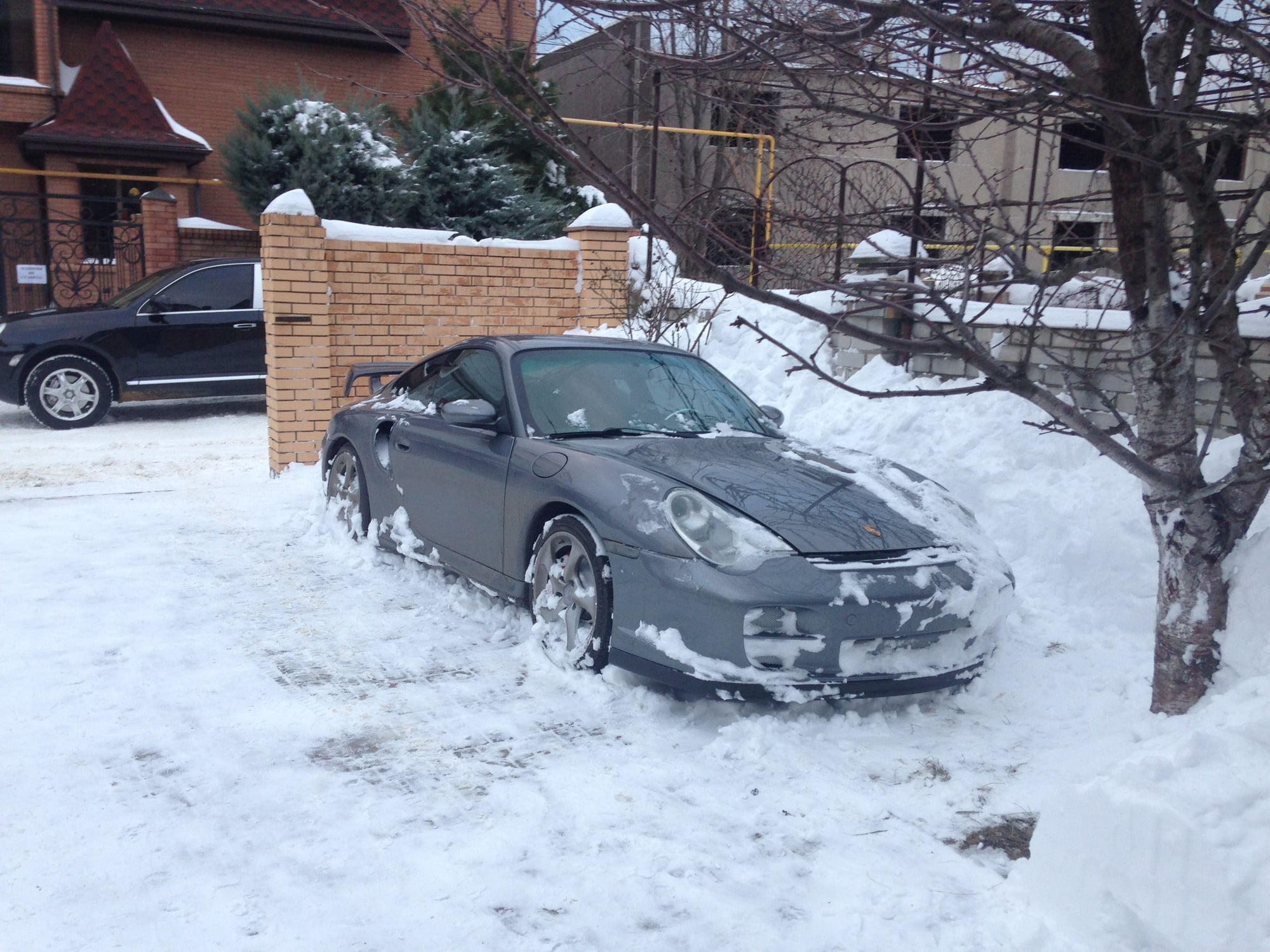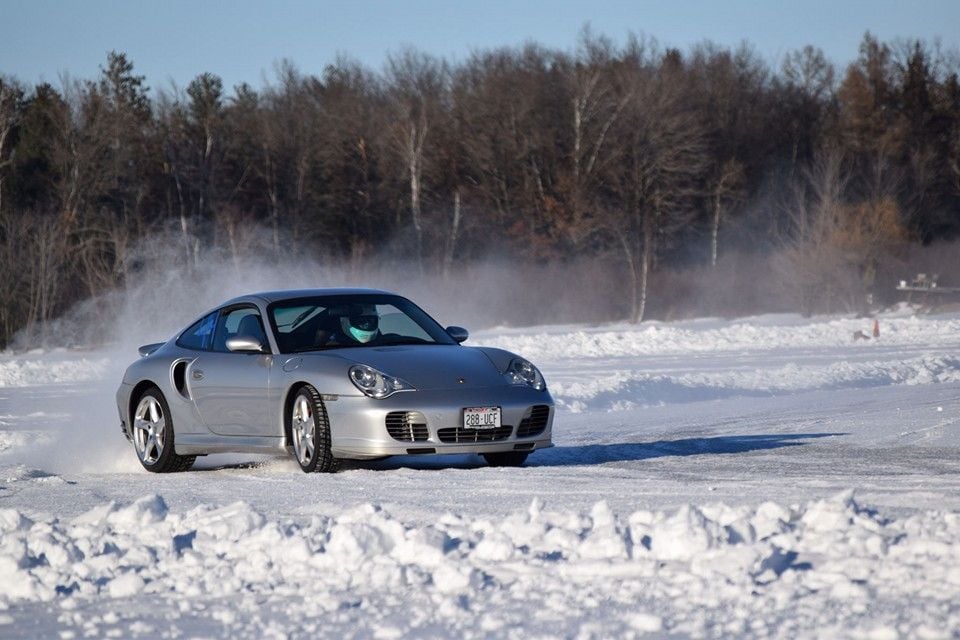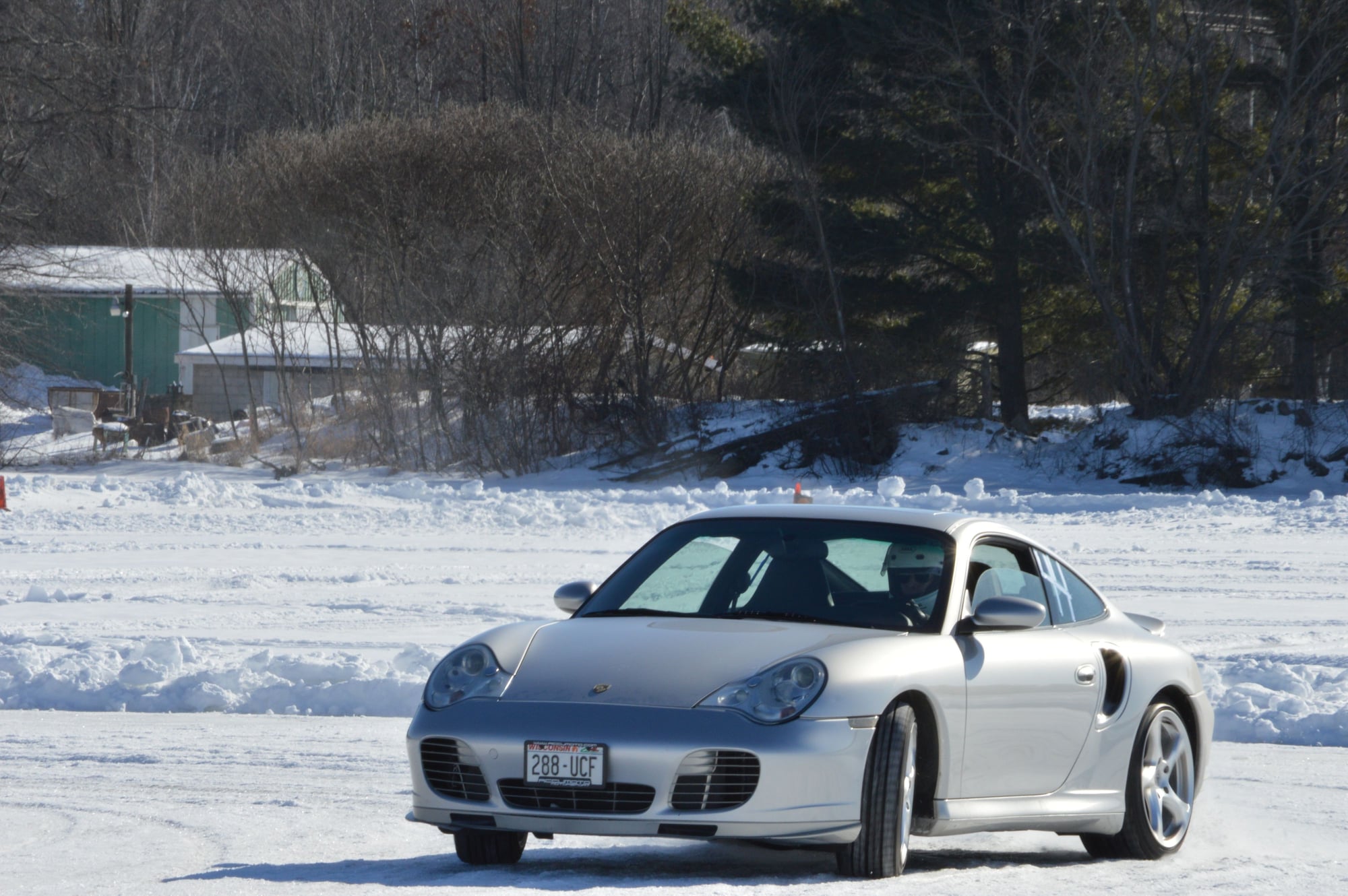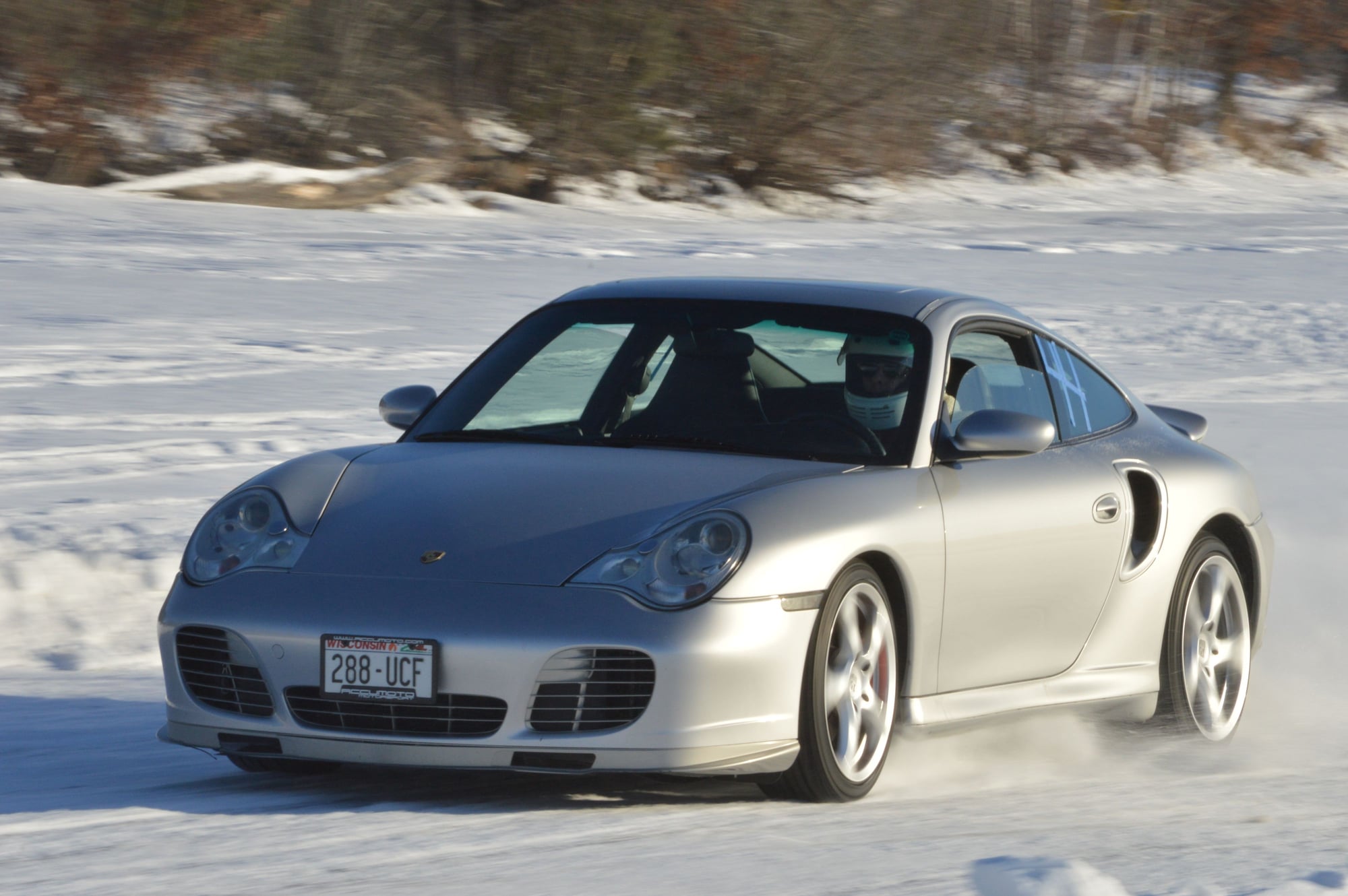996TT - More Snow pics
#76
RL Community Team
Rennlist Member
Rennlist Member
It doesn't matter which tire is bigger or smaller. As long as its within 3%, the viscous fluid is cool and not engaged. If either input, rear or front, spins faster, the fluid hardens and locks the coupler, then power is transmitted to the front regardless of which input caused it to harden.
That's how I understand it.
That's how I understand it.
The fluid, which if I remember correctly is a type of silicone, is always transferring rotation force one way or the other with any perceived rotational speed difference rear to front. That is why the system runs at a normal constant 95/5 power split with OEM summer tire sizes.
#77
Originally Posted by Carlo_Carrera
I have heard differently.
The fluid, which if I remember correctly is a type of silicone, is always transferring rotation force one way or the other with any perceived rotational speed difference rear to front. That is why the system runs at a normal constant 95/5 power split with OEM summer tire sizes.
The fluid, which if I remember correctly is a type of silicone, is always transferring rotation force one way or the other with any perceived rotational speed difference rear to front. That is why the system runs at a normal constant 95/5 power split with OEM summer tire sizes.
Wikipedia has a good explanation of how it works, I think this sums it up well.
"This type of device essentially differs from fluid couplings such as torque converters by using the viscosity of the medium to transfer torque, rather than its momentum"
#78
Originally Posted by Carlo_Carrera
always transferring rotation force one way or the other with any perceived rotational speed difference rear to front.
#79
RL Community Team
Rennlist Member
Rennlist Member
That's correct, but I don't think it matters which direction either of the two sets of disk are spinning.
Wikipedia has a good explanation of how it works, I think this sums it up well.
"This type of device essentially differs from fluid couplings such as torque converters by using the viscosity of the medium to transfer torque, rather than its momentum"
Wikipedia has a good explanation of how it works, I think this sums it up well.
"This type of device essentially differs from fluid couplings such as torque converters by using the viscosity of the medium to transfer torque, rather than its momentum"
It just myself and others do not like the idea of the winter tire sizes that in static driving have the rotational force going in what we consider to be the wrong direction. Especial when there are winter tire size combinations available that match the rear/front diameter ratios of the summer sizes. There is a consistency there that I logically can not ignore.
#80
RL Community Team
Rennlist Member
Rennlist Member
That is the basis of how the system works. The wheels that are spinning faster, IE loosing grip, have power transferred away from them.
#81
Originally Posted by Carlo_Carrera
Yes, understand and acknowledge that unlike the hydraulic fluid in a torque converter the viscous coupling fluid thickens when force is introduced and power transfer increases as the rotational force increases via that thickening.
It just myself and others do not like the idea of the winter tire sizes that in static driving have the rotational force going in what we consider to be the wrong direction. Especial when there are winter tire size combinations available that match the rear/front diameter ratios of the summer sizes. There is a consistency there that I logically can not ignore.
It just myself and others do not like the idea of the winter tire sizes that in static driving have the rotational force going in what we consider to be the wrong direction. Especial when there are winter tire size combinations available that match the rear/front diameter ratios of the summer sizes. There is a consistency there that I logically can not ignore.
There is no "wrong" direction, both directions make the fluid harden.
#82
A comment about 996 turbo as a winter car: After Epiphany it was very cold day and battery of daily commuter Subaru totally died = had to take turbo out of the garage. The car worked very well, only the rear wing refused to lift up @temperature -27,5 C / -17,5 F
Cheers, Jyrki
#83
There is enough "slack" in the fluid to account for the tiny variance in the factory recommended winter tire set up.
Im not talking about a drastic difference in sizing where your concerns may actually materialize.
oe spec? forget it, nothing to worry about. thats the end of it.
It just so happens I run similar ratio as the "summer" set up. But that came down to available sizes in the tires more than anything else.
are you an engineer or mechanic?
Im not talking about a drastic difference in sizing where your concerns may actually materialize.
oe spec? forget it, nothing to worry about. thats the end of it.
It just so happens I run similar ratio as the "summer" set up. But that came down to available sizes in the tires more than anything else.
are you an engineer or mechanic?
#84
RL Community Team
Rennlist Member
Rennlist Member
I went to school for both but I currently practiced neither professionally.
And there is no "slack" in the system. If you put your turbo up on a lift with the transmission in neutral and spin the front tires just the slightest bit the rears will start to turn as well. A viscous coupling is an extremely simple device. There are no electronic controls whatsoever. All it knows is the speed of one spinning disk versus the speed of another spinning disk. It divides the torque split accordingly.
IMHO the differences in the front to rear tire diameters matter.
And there is no "slack" in the system. If you put your turbo up on a lift with the transmission in neutral and spin the front tires just the slightest bit the rears will start to turn as well. A viscous coupling is an extremely simple device. There are no electronic controls whatsoever. All it knows is the speed of one spinning disk versus the speed of another spinning disk. It divides the torque split accordingly.
IMHO the differences in the front to rear tire diameters matter.
Last edited by Carlo_Carrera; 02-05-2016 at 05:22 PM.
#85
Well I think its fair to say you may have forgotten some of your properties of materials and design theory.
No one is saying differences don't matter. Its the size of the difference that matters. And the oem winter spec falls within these limits. Easily.
Nevermind the fact that the rears wear quicker than the fronts so how long is that minuscule difference lasting?
No one is saying differences don't matter. Its the size of the difference that matters. And the oem winter spec falls within these limits. Easily.
Nevermind the fact that the rears wear quicker than the fronts so how long is that minuscule difference lasting?
#86
RL Community Team
Rennlist Member
Rennlist Member
And you do seem to be saying differences don't matter.
As I said at the beginning we can go back-and-forth about our opinions forever but the mechanical engineering is what it is and my opinion is based on that.








